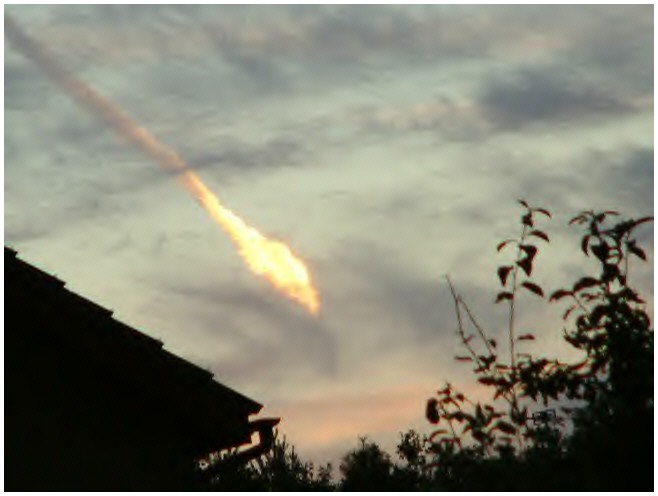What is Life?
Before we discuss how life came to be, we should first understand what life is.
Living things will always:
1) be comprised of cells
2) respond to stimuli (though not always to the same stimuli, nor in the same way)
3) maintain homeostasis
4) use energy to grow
5) change and mature
6) reproduce
So every living thing we know of obeys all of the "rules of life" as listed above, right?
WRONG!!!!
As we learned today, viruses are made of protein, and use animals to reproduce. These six rules of life apply to most animals. And for those planning to use number 6 as an excuse to "hop on the good foot and do the bad thing", living things only have to have the ability to reproduce. Those who dont "get busy" are still deemed alive!
So, how did life come to be?
How Life Came To Be
There is no proven theory about how life began, but there are several hypotheses.
One hypothesis is one which is supported mainly by the Bible and believers in God.
Special Creation suggests that life began simply when God made it.

This hypothesis is NOT TESTABLE, and we can never be sure if this hypothesis is correct. This is obviously not the only hypothesis.
Extraterrestrial Origin suggests that organic materials came from comets and meteorites striking the Earth.

The important thing to remember about this theory is that it does not suggest that we descended from this guy....
 It merely suggests that organic molecules arrived on Earth in comets and meteors that struck the Earth.
It merely suggests that organic molecules arrived on Earth in comets and meteors that struck the Earth.Spontaneous Abiotic Origin, which is the theory that suggests that the Big Bang occurred, states that life spontaneously evolved from inorganic molecules.
To see a video (only the first 40 seconds or so are really relevant) about the big bang, go here:
http://www.youtube.com/watch?v=igLaWRgpn5w&mode=related&search
(sorry I couldn't embed it!)
Anyway....
The Condition Of Earth In It's Early Stages
When the Earth was first..."boomed" into existence, the atmosphere was completely unfit for humans and organisms like us.
Oceans were boiling...

.....Free oxygen was missing from the atmosphere....

....And lightning, UV radiation, and Volcanoes were the sources of energy.

So which Hypothesis Of The Origins Of Life is most likely???
Well, scientists Miller and Urey (with an "assist" by scientists Oparin and Haldane) modeled the conditions of early life as described above, and concluded that Spontaneous Abiotic Origin was possible. This is also the theory that is most widely accepted in the science community.
Origin Of Genetics
RNA stands for Ribonucleic Acid. RNA is like DNA, only without the sugars.
RNA is believed to be the first genetic material, as it encodes information, is able to replicate itself, supports evolution and inheritance, and has enzyme functions.
Some scientists opposed this idea by suggesting that the first genetic materials were proteins (enzymes). They argue that RNA, or anything for that matter, could not reproduce without enzymes.
BUT THE PROTEIN THEORY, as it has come to be known as, IS NOT BELIEVED TO BE CORRECT! So don't let that confuse you.
Key Events In The Origin Of Life
First off, the Earth....







 In the picture above, there is a homologous structure in all six individuals most likely because they all have a common ancestor and over time have evolved from their ancestor to carry out different functions.
In the picture above, there is a homologous structure in all six individuals most likely because they all have a common ancestor and over time have evolved from their ancestor to carry out different functions. At different stages of development, there are similar structures that exist in vertebrate embryos. In the individuals above, there is a gill pouch present in each vertebrate. However, that does not mean that humans have gills because we don't. It is really thyroid glands, not gills that is in humans. Comparative embryology shows species with similar ancestors.
At different stages of development, there are similar structures that exist in vertebrate embryos. In the individuals above, there is a gill pouch present in each vertebrate. However, that does not mean that humans have gills because we don't. It is really thyroid glands, not gills that is in humans. Comparative embryology shows species with similar ancestors.

 Peppered Moths:
Peppered Moths: Here is proof that apes and humans really are related.
Here is proof that apes and humans really are related. 
 - A cute cartoon on the evolution of cats.
- A cute cartoon on the evolution of cats. Sickle cell has the highest frequency in heterozygotes(H^b H^s). 1 in 5 central Africans, which is a huge number, are heterozygotes. 1 in 100 are homozygous. They usually die before their reproductive age. Since the H^s allele has such a high level in the African population, it suggests that there was an advantage of being heterozygous.
Sickle cell has the highest frequency in heterozygotes(H^b H^s). 1 in 5 central Africans, which is a huge number, are heterozygotes. 1 in 100 are homozygous. They usually die before their reproductive age. Since the H^s allele has such a high level in the African population, it suggests that there was an advantage of being heterozygous.


























